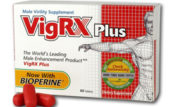There’s big bucks in skin care products, and with good reason. People want to get rid of wrinkles and enjoy the taut, plump skin of their youth. That’s easier said than done, of course. But recent developments in skin care reveal some promising solutions. Among them, retinoids, which have raised more than a few eyebrows.
About Retinoids
Originally used in acne treatment products in the 1970s, retinoids are a chemical compound related to vitamin A. You’ll find them in many over-the-counter skin care products and prescription anti-aging creams that promise to even skin tone and get rid of wrinkles. But do they deliver? According to many dermatologists, they do.
Retinoids stimulate rapid turn-over among skin cells, so they die and are quickly replaced. They preserve collagen and thicken the deeper layers of the skin, where wrinkles start, and are therefore an effective way to even skin tone and treat blotchiness.
There is a misconception that retinoids, and particularly prescription products, make the skin more sensitive to sunlight. While retinoids can cause redness and peeling in the first weeks of use, retinoids actually thicken the epidermis. They don’t thin the skin, but it is advisable to wear a sunscreen when using retinoid products.
Prescription Versus Over-the-Counter Retinoids
Dermatologists often tout prescription retinoids like tretinoin and retinoic acid (Retin-A, Renova, Refissa) as “100 times” more powerful than retinoids in non-prescription cosmetics, and there’s truth to some of these claims. Tretinoin, for example, is a prescription-strength retinoid that has an unrivalled ability to preserve collagen.
That said, prescription retinoids are more potent than regular cosmetics and can irritate the skin if one has never used retinoids. In many cases, dermatologists recommend a less potent retinoid, like retinol, found in many over-the-counter cosmetics, as a starting point, from which one can move up to the stronger (and more expensive) prescription creams.
Be aware that OTC products aren’t required to disclose how much retinol they use and are usually weaker than pharmaceuticals. While you could see smoother skin with prescription retinoids in six to eight weeks, OTC treatments can take up to six months to produce the same results.
But don’t let that stop you from trying an OTC topical cream with retinoids – they work, albeit slower than their prescription cousins, and can help you progress to more powerful products. Look for non-prescription products with retinol, and retinaldehyde.
How to Use Retinoids
Start slowly. Lather a pea-sized dollop of a retinoid cream on your face each day. Be sure to use retinoids with a sunscreen, particularly at first. Wear retinoids on clean, dry skin, and avoid using with skin care products with benzoyl peroxide, resorcinol, sulfur or salicylic acid, as any combination of these ingredients with retinoids can anger the skin.
Topical retinoids are safe, but pregnant or nursing women should consult with their doctor before using retinoids.
If a retinoid product irritates your skin, moisturize and let it sit for a few days. Then try again. More often than not, your skin just needs time to get used to retinoids and the process they stimulate within the skin’s deeper layers. Give them time. And experiment, because skin care products with retinoids are among the least intrusive and most effective ways to fight the effects of aging.




